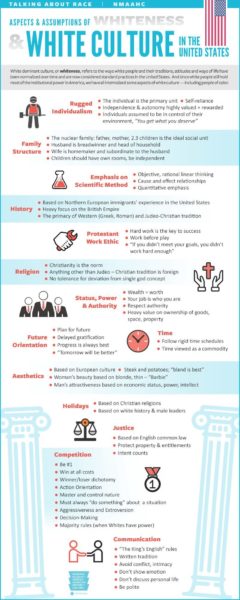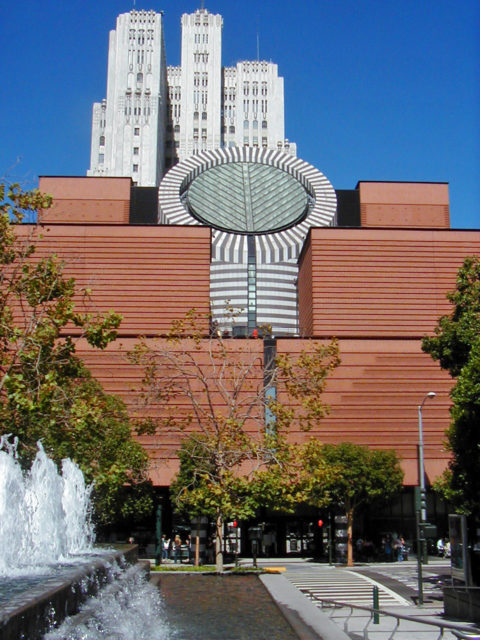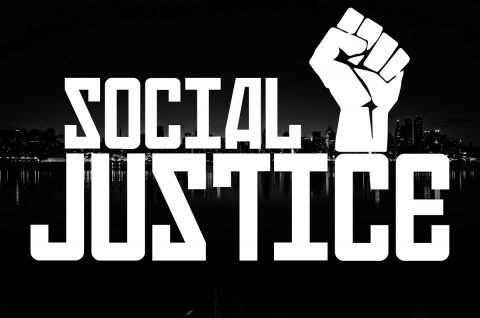A Canadian Broadcasting [Corporation] program also debuted a new term this past week: “non-straight cisgender people.” This is the newly approved newspeak for gay people, parsed through the language of critical queer studies. The proponents of this new language seem eager to retire familiar terms like “gay men” or “lesbians” — perhaps because they suggest that the homosexual experience is rooted in basic human nature and can exist outside the parameters of structural oppression. So they find ways to define us in terms of queer theory, insisting there are only oppressed LGBTQ+ people. That’s also why, for example, so many on the left insist that gay white men had very little to do with Stonewall, which was led, we’re told, by trans women of color, subsequently betrayed by white men, who stole the movement from them. That this is untrue is irrelevant. It’s a narrative which serves to dismantle structures of oppression. And that’s all that matters.
Leading progressive maternity and doula organizations now deploy and encourage a whole array of “gender-neutral language” with respect to sex, birth, labor, and parenting. And so we now have the terms “chest-feeding,” “persons who menstruate,” “persons who produce sperm,” and “birthing person” for breastfeeding, women, men, and mothers, respectively. And instead of a butthole, we have a “back-hole”; instead of a vagina, we have a “front hole.” “Ovaries” and “uterus” are now rendered as “internal organs,” which may strike you as somewhat vague. These may sound completely absurd now, but given the choke hold critical gender theory has on almost all elite organizations, you can be sure you’ll hear them soon enough. They’ll likely be mandatory if you want to prove you’re not a transphobe. It was an objection to one of these terms — “people who menstruate” — that got J.K. Rowling tarred again as a bigot.
Those of us who oppose this abuse of the English language, who try to abide by Orwell’s dictum to use the simplest, clearest Anglo-Saxon words to describe reality, are now instantly suspect. Given the fear of losing your job for resisting this madness, most people will submit to this linguistic distortion. As you can see everywhere, the stigma of being called a bigot sweeps away all objects before it. But the further this goes — and there is no limiting principle in critical theory at all — the less able we are to describe reality. Which is, of course, the point. Narratives, only narratives, exist. And power, only power, matters.
Andrew Sullivan, “China Is a Genocidal Menace”, New York, 2020-07-03.
October 5, 2020
QotD: Language changes to accord with critical studies theory
September 19, 2020
B.C./A.D. or C.E./B.C.E.? A perfect solution!
Lindybeige
Published 24 Oct 2014I recall the first time I encountered the modern awfulness that is the terminology ‘C.E.’ and ‘B.C.E.’ — it was in a museum in Europe. Here I present my solution to the non-problem.
I spent a day making this video, and then didn’t like the result. For one thing, it was too long and rambling at four and a half minutes, so the next day I remade it, and I’ve now managed to cut it down to eight and half minutes.
Lindybeige: a channel of archaeology, ancient and medieval warfare, rants, swing dance, travelogues, evolution, and whatever else occurs to me to make.
▼ Follow me…
Twitter: https://twitter.com/Lindybeige I may have some drivel to contribute to the Twittersphere, plus you get notice of uploads.
website: www.LloydianAspects.co.uk
B.C./A.D. or C.E./B.C.E.? A perfect solution!
September 18, 2020
QotD: Heinlein’s “Crazy Years”
It’s become a thing among Heinlein fans, writers and readers alike. We get together for a good talk, and a glass of wine, and one of us will mention something nuts and the others will go “Well, these are the crazy years.”
Things like the girl who had to remove a decoration from her purse before boarding a plane because the decoration was in the shape of a revolver, though about finger sized and evidently cut in half lengthwise. The TSA thought the ban on guns applied to this too. (Of course, she’d flown with it before, so it was just this TSA station, but nonetheless its rulings were absolute.)
Things like the little deaf boy who can’t sign his name because one of the letters looks like a gun.
Things like kids getting in trouble because of a fictional story they wrote. Things like my younger son – it’s a theme, yes. The boy is lightning rod on his mother’s side. More on that later – getting sent to the school psychiatrist because he used the following sentence in an essay “Some people think I’m crazy.”
[…]
There’s half (half?) of our literature and movies, which glorify behaviors that in real life get you killed or make you a bum. There’s the fact that being thrifty, hard working and honoring your contracts makes you “uncool.” There the fact our women are taught to hate all men and men are finally learning to avoid women. There’s …
You say it in groups of Heinlein fans, and people go “Well, these ARE the crazy years.” And you move on.
Sarah Hoyt, “These Are The Crazy Years”, According to Hoyt, 2013-07-17.
September 17, 2020
September 11, 2020
QotD: “Karen” and other stereotypes
When I first saw the name “Karen,” used in the plural, apparently for a whole class of women, I did not look it up. Context told me that I wouldn’t have to; that a Karen was simply the updated term for what I formerly knew as a Becky. There are related, more focused terms, such as “Trixie” for a Karen from upscale white Chicago, and so forth. It is one of many reasons to celebrate the black urban lexical culture from which it emerged. The image of a passive-aggressive blonde, with a pony tail, disputing her order at Starbucks, comes quickly to mind. She will be married to a “Chad” whom she met in law school.
I love stereotypes. They help us understand what the Greeks called syndromes, carrying them beyond the narrow world of medical jargon. “Karen” began as the stereotype for the woman who “wants to see the manager,” but was soon extended through a gallery of related traits. One thinks affectionately through a shortlist of the Karens one has known. For the Christian, it can impact one’s prayer life. (I found myself once praying for a certain Karen Surname, then spontaneously extending it to “Karens everywhere,” with a memorial for the Beckies. I noticed as I searched my memory that many of these Karens were biologically male.)
And today I wonder, as I have often done, at the genius of colloquial language, and the unerring way with which it uncovers fresh stereotypes, that enhance our perception of reality, in a way like painting and the other fine arts. (In a lost portrait, Leonardo depicted a Karen of the Renaissance.)
David Warren, “Karens & their kind”, Essays in Idleness, 2020-06-10.
August 21, 2020
Virtuesplaining Blazing Saddles
Paul du Quenoy says that Mel Brooks is cancelled after all:
It seems like only yesterday that HBO Max, the financially troubled American cable television network’s new film streaming service, signalled its virtue by removing Gone With The Wind from viewing so that the classic film could be properly “contextualised” as what presenter and University of Chicago film professor Jacqueline Stewart calls “a prime text for examining expressions of white supremacy in popular culture”. She believes this is useful for the “re-education” of audiences who might otherwise stray into thoughtcrime.
Mel Brooks’s smash hit 1974 comedy Blazing Saddles, which seems to have been added to HBO Max since the Gone With The Wind dust up and is known for its liberal use of the feared and loathed “n-word”, arrived with a similarly patronising disclaimer already installed. In a three-minute introduction that apparently cannot be skipped over, Stewart is there again, this time to inform viewers that “racist language and attitudes pervade the film”, while instructing them that “those attitudes are espoused by characters who are portrayed here as explicitly small-minded, ignorant bigots … The real, and much more enlightened, perspective is provided by the main characters played by Cleavon Little and Gene Wilder”.
Thanks, Aunt Jacqueline. If you have not seen Blazing Saddles – and if you are under the age of forty there is an excellent chance some prudish authority figure sanitised it out of your cosseted millennial existence – it stands as one of the greatest, and the certainly the funniest, anti-racist films of all time. Based on a story by Andrew Bergman, Brooks conceived it as a scathing send-up of racism and the hypocrisy that still enabled it after the great civil rights victories of the 1960s. Brooks’s idiom was a parody of the classic Western, by then an exhausted genre that had, among other flaws, become inanely predictable and was much criticised for leaving out minorities. A landmark of American film, Blazing Saddles was selected in 2006 for inclusion in the US National Film Registry, which recognises “culturally, historically, or aesthetically significant films” worthy of preservation.
Drenched in hilarity – and by my count using the “n-word” 17 times in its 93-minute run – the plot involves a conspiracy by an avaricious U.S. state attorney general who wants to drive white settlers off land he needs to complete a profitable railroad project. After having outlaws wreak mayhem on the townspeople, he recommends that the governor appoint a black sheriff to restore law and order, cynically assuming that their racism will cause them to reject the new lawman and give up. Despite a rough initial reception, the sheriff outwits attempts to get rid of him and, with the help of a washed up but sympathetic alcoholic gunslinger, leads the townspeople to victory, winning their love and respect before moving on to other brave deeds.
While HBO no longer wants to risk having its paying customers think for themselves (and what stale corporate outfit uneasily transitioning to a crowded new market wouldn’t?), it could rightly be said that anyone dumb enough to miss the film’s message might be a recent product of Anglo-American higher education. I do not mean this at all facetiously. Decaying and run by a self-important clerisy whose demands to be taken seriously only become shriller as it declines in reach and vitality – and from which any participant can be dismissed for even the slightest speech or behavioural infraction – academia naturally discourages humour. Jokes, which can almost always cause some kind of offence, are simply too risky to be told or laughed at, even in private. Finding the wrong thing funny can invite career-hobbling accusations that one has demeaned a student or colleague and thereby made them feel unacceptably “uncomfortable” or even physically “unsafe”. Perceived flippancy bruises sanctified “professional seriousness” in a way tantamount to sacrilege. The only tolerated exceptions are a kind of solemn irony that offers comfort in coping with academia’s increasing irrelevance and a resigned gallows humor about its ever more limited prospects.
August 3, 2020
QotD: History or “Her” story?
In another land, a long, long time ago, I was a student of languages. It was there that I came across the American left’s obsession with corrupting the language.
In my last year in college, I had American Literature taught by a Fullbright exchange professor. I will never forget the moment the poor man — talking to a class of 36, all women as such classes often are — let slip the innocent word “him” to mean an indeterminate gender. He paused, went white, his eyes widened, and he said, “I mean, I mean, he or she.”
Meanwhile, the class of 36 was staring at him in puzzlement. It took us a while to take it all apart and realize he thought we’d be offended by the use of “he” to mean someone generic, of indeterminate gender.
I think we patted him kindly on the shoulder and told him that no, really, we weren’t offended. The usage was the same in Portuguese and we’d been told it was the same in most Indo-European languages. And who on Earth would get offended over semantics? The language was the language. It meant nothing about us personally.
This was of course before I married, came to the U.S. and found that for the American woman circa 1985, the language was not just personal, it was personally offensive.
I remember standing in horror underneath a bookstore section proudly labeled Herstory.
Of course the etymology of the word history is not his + story, the sort of pseudo-clever deduction about language that I was used to from the near-illiterate elderly people in the village. (It would be too complex and involve Portuguese, but there was this old farmer who had somehow deduced from the Portuguese word for farmer that farmers were the only ones who would be saved at the end of time.)
History, of course, is not originally an English word. It comes from the Latin historia — meaning a relation of events — by way of the French estoire, meaning story. Note please that in neither of those languages does “his” mean “belonging to him.” And that making the same sort of illiterate assumptions about the French word, we’d get “It is oire.”
I thought that the store must have hired an illiterate employee, but no, over the next ten years, in various circumstances, and possibly still except for the fact that I’ve learned to silence such fools with a death glare, I’ve come across the same smug-idiot assumption and “corrections” of the English word, so as to “fight against the patriarchy.”
That this is done by people who paid more money than I make in a couple of years for a college degree, and who, doubtlessly, think that etymology is a dish made with onions, or perhaps a conspiracy of the patriarchy fills me with a sort of dull rage that has no outlet.
Sarah Hoyt, “The Semantic Whoredom of the Left”, PJ Media, 2018-05-11.
July 29, 2020
The Equity, Inclusivity, and Diversity Industrial Complex
In The Dominion, Ben Woodfinden comments on a Ross Douthat column on the “antiracist” demands of our modern protestariat (the hordes of un- or under-employed university-educated young liberals and socialists):

University College, University of Toronto, 31 July, 2008.
Photo by “SurlyDuff” via Wikimedia Commons.
… the most interesting aspect of this lockdown-induced outpouring of collective rage hasn’t been the protests, or the cancellations, but the woke job creation that is going on. The ideology behind things like “white fragility” is increasingly being transformed into what can be described as an equity-inclusivity-diversity (EID) industrial complex that might end up being the most significant long term structural change that emerges out of the protests.
One of the most common responses in elite institutions as they promise to address systemic racism has been the creation of new jobs and positions that will supposedly help to do so. For instance, the Washington Post created a set of new positions that will be focusing on racial issues. This included hiring a “Managing Editor for Diversity and Inclusion.” At Princeton, the administration announced, like many other elite universities, new courses (which means new teaching opportunities) focused on racial injustice, as well as new projects and funding for research to explore and address racial issues. Stanford has created a new Centre for Racial Justice at its law school.
This direct job creation is just the tip of the iceberg. The real EID industrial complex is in the creation of a vast number of new jobs dedicated to the promotion and advancement of the basic tenets of this ascendant ideology through the expansion of human resource departments to deal with these issues, the creation of new EID bureaucrats and administrators in universities, corporations, government departments, the rise of EID consulting and mandatory courses and workshops for employees, new jobs and potential litigation for lawyers, as well as courses and modules in law schools to teach aspiring lawyers about these things.
In the bestselling Ibram X. Kendi book How To Be An Antiracist, one of Kendi’s central solutions is to pass an anti-racist amendment to the U.S. Constitution and permanently establish and fund a Department of Anti-racism. This department:
would be comprised of formally trained experts on racism and no political appointees. The DOA would be responsible for preclearing all local, state and federal public policies to ensure they won’t yield racial inequity, monitor those policies, investigate private racist policies when racial inequity surfaces, and monitor public officials for expressions of racist ideas. The DOA would be empowered with disciplinary tools to wield over and against policymakers and public officials who do not voluntarily change their racist policy and ideas.
The radical tendencies of the bourgeois bolsheviks in the streets might make them seem like true revolutionaries, but what this movement seems to actually want to create, with remarkable success, is new employment opportunities for true believers in the new anti-racist creeds. Racism won’t so much be solved by tearing society down, but by massively expanding new professional and managerial jobs that can guarantee full employment for the credentialed class of true believers.
O’Boyle’s thesis is that the revolutions that swept across European cities in 1848 were because a large surplus of resentful and overeducated men felt society was denying to them what they were rightfully owed. O’Boyle looks at Germany, where university education was cheap, and was “emphasized as an avenue to wealth and power.” This ending up producing an excess of ambitious, but resentful and frustrated men who felt society was not allotting them the status and comfort they deserved. The same was true in France. But in Britain, the opportunities produced by industrialization that had yet to fully materialize on the continent kept this excess surplus of overeducated men much smaller, and helped insulate Britain from revolution.
What if the EID industrial complex actually helps to reduce the scarcity of opportunities in elite fields and institutions that will put a lid on the unrest that overproduction breeds? The EID industry is worth billions of dollars, and in a way it might be the solution liberalism offers to both the radical progressivism of this ideology, and to the challenge posed by elite overproduction.
July 27, 2020
July 22, 2020
How the left lost its sense of humour
Matt Taibbi outlines the way “the right” used to be the humourless scolds and omnipresent busybodies demanding the government trample the rights of people they didn’t like, then points out that the progressives have become exactly the people they used to poke fun at:
The old Republican right’s idea of “humor” was its usual diatribes against Bad People, only with puns thrown in (are you ready for “OxyClinton”?). As a result the Fox effort at countering the Daily Show, the 1/2 Hour News Hour — a string of agonizing “burns” on Bush-haters and Hillary — remains the worst-rated show in the history of television, according to Metacritic. The irony gap eventually spelled doom for that group of Republicans, as Trump drove a truck through it in 2016. However, it’s possible they just weren’t as committed to the concept as current counterparts.
Take the Smithsonian story. The museum became the latest institution to attempt to combat racism by pledging itself to “antiracism,” a quack sub-theology that in a self-clowning trick straight out of Catch-22 seeks to raise awareness about ignorant race stereotypes by reviving and amplifying them.
The National Museum of African American History and Culture created a graphic on “Aspects and Assumptions of White Culture” that declared the following white values: “the scientific method,” “rational, linear thinking,” “the nuclear family,” “children should have their own rooms,” “hard work is the key to success,” “be polite,” “written tradition,” and “self-reliance.” White food is “steak and potatoes; bland is best,” and in white justice, “intent counts.”
The astute observer will notice this graphic could equally have been written by white supremacist Richard Spencer or History of White People parodist Martin Mull. It seems impossible that no one at one of the country’s leading educational institutions noticed this messaging is ludicrously racist, not just to white people but to everyone (what is any person of color supposed to think when he or she reads that self-reliance, politeness, and “linear thinking” are white values?).
The exhibit was inspired by white corporate consultants with Education degrees like Judith Katz and White Fragility author Robin DiAngelo, who themselves echo the work of more consultants with Ed degrees like Glenn Singleton of Courageous Conversations. Per the New York Times, Courageous Conversations even teaches that “written communication over other forms” and “mechanical time” (i.e. clock time) are tools by which “whiteness undercuts Black kids.”
The notion that such bugbears as as time, data, and the written word are racist has caught fire across the United States in the last few weeks, igniting calls for an end to virtually every form of quantitative evaluation in hiring and admissions, including many that were designed specifically to combat racism. Few tears will be shed for the SAT and ACT exams, even though they were once infamous for causing Harvard to be overpopulated with high-scoring “undesirables” like Jews and Catholics, forcing the school to add letters of reference and personal essays to help restore the WASP balance.
The outcry against the tests as “longstanding forces of institutional racism” by the National Association of Basketball Coaches is particularly hilarious, given that the real problem most of those coaches are combating is the minimal fake academic entry requirement imposed by the NCAA to help maintain a crooked billion-dollar business scheme based on free (and largely Black) labor. The tests have been tweaked repeatedly over the years to be more minority-friendly and are one of the few tools that gave brilliant but underprivileged kids a way to blow past the sea of rich suburbanites who feel oppressed by them … But, fine, let’s stipulate, as Neon Bodeaux put it, that “them tests are culturally biased.” What to make of the campaign to end blind auditions for musical positions, which the New York Philharmonic began holding in the early seventies in response to complaints of discrimination?
Before blind auditions, women made up less than 6 percent of orchestras; today they’re half of the New York Philharmonic. But because the change did not achieve similar results with Black and Hispanic musicians, the blind audition must now be “altered to take into fuller account artists’ backgrounds and experiences.” This completes a decades-long circle where the left/liberal project went from working feverishly to expunge racial stereotypes in an effort to level the playing field, to denouncing itself for ever having done so.
This would be less absurd if the effort were not being led in an extraordinary number of cases by extravagantly-paid white consultants like DiAngelo and Howard Ross, a “social justice advocate” whose company billed the federal government $5 million since 2006 to teach basically the same course on “whiteness” to agencies like NASA, the Treasury, the FDIC, and others.
It’s unsurprising that in the mouths of such people, the definitions of “whiteness” sound suspiciously like lazy suburban white stereotypes about Black America, only in reverse. They read like a peer-reviewed version of Bill de Blasio’s infamous joke about “CP Time.”
July 18, 2020
Andrew Sullivan and New York magazine part company “amicably”
In his final column for New York, Andrew Sullivan announces he’s going back to blogging and stop making employees there feel unsafe:
The good news is that my last column in this space is not about “cancel culture.” Well, almost. I agree with some of the critics that it’s a little nuts to say I’ve just been “canceled,” sent into oblivion and exile for some alleged sin. I haven’t. I’m just no longer going to be writing for a magazine that has every right to hire and fire anyone it wants when it comes to the content of what it wants to publish.
The quality of my work does not appear to be the problem. I have a long essay in the coming print magazine on how plagues change societies, after all. I have written some of the most widely read essays in the history of the magazine, and my column has been popular with readers. And I have no complaints about my interaction with the wonderful editors and fact-checkers here — and, in fact, am deeply grateful for their extraordinary talent, skill, and compassion. I’ve been in the office maybe a handful of times over four years, and so there’s no question of anyone mistreating me or vice versa. In fact, I’ve been proud and happy to be a part of this venture.
What has happened, I think, is relatively simple: A critical mass of the staff and management at New York Magazine and Vox Media no longer want to associate with me, and, in a time of ever tightening budgets, I’m a luxury item they don’t want to afford. And that’s entirely their prerogative. They seem to believe, and this is increasingly the orthodoxy in mainstream media, that any writer not actively committed to critical theory in questions of race, gender, sexual orientation, and gender identity is actively, physically harming co-workers merely by existing in the same virtual space. Actually attacking, and even mocking, critical theory’s ideas and methods, as I have done continually in this space, is therefore out of sync with the values of Vox Media. That, to the best of my understanding, is why I’m out of here.
Two years ago, I wrote that we all live on campus now. That is an understatement. In academia, a tiny fraction of professors and administrators have not yet bent the knee to the woke program — and those few left are being purged. The latest study of Harvard University faculty, for example, finds that only 1.46 percent call themselves conservative. But that’s probably higher than the proportion of journalists who call themselves conservative at the New York Times or CNN or New York Magazine. And maybe it’s worth pointing out that “conservative” in my case means that I have passionately opposed Donald J. Trump and pioneered marriage equality, that I support legalized drugs, criminal-justice reform, more redistribution of wealth, aggressive action against climate change, police reform, a realist foreign policy, and laws to protect transgender people from discrimination. I was one of the first journalists in established media to come out. I was a major and early supporter of Barack Obama. I intend to vote for Biden in November.
It seems to me that if this conservatism is so foul that many of my peers are embarrassed to be working at the same magazine, then I have no idea what version of conservatism could ever be tolerated. And that’s fine. We have freedom of association in this country, and if the mainstream media want to cut ties with even moderate anti-Trump conservatives, because they won’t bend the knee to critical theory’s version of reality, that’s their prerogative. It may even win them more readers, at least temporarily. But this is less of a systemic problem than in the past, because the web has massively eroded the power of gatekeepers to suppress and control speech. I was among the first to recognize this potential for individual freedom of speech, and helped pioneer individual online media, specifically blogging, 20 years ago.
And this is where I’m now headed.
July 16, 2020
Curator forced to resign over “toxic white supremacist beliefs”
The San Francisco Museum of Modern Art parted company with a long-time curator for his racist views and white supremacist actions in continuing to pursue works to add to the collection from white male artists:
Until last week, Gary Garrels was senior curator of painting and sculpture at the San Francisco Museum of Modern Art (SFMOMA). He resigned his position after museum employees circulated a petition that accused him of racism and demanded his immediate ouster.
“Gary’s removal from SFMOMA is non-negotiable,” read the petition. “Considering his lengthy tenure at this institution, we ask just how long have his toxic white supremacist beliefs regarding race and equity directed his position curating the content of the museum?”
This accusation — that Garrels’ choices as an art curator are guided by white supremacist beliefs — is a very serious one. Unsurprisingly, it does not stand up to even minimal scrutiny.
The petitioners cite few examples of anything even approaching bad behavior from Garrels. Their sole complaint is that he allegedly concluded a presentation on how to diversify the museum’s holdings by saying, “don’t worry, we will definitely still continue to collect white artists.”
Garrels has apparently articulated this sentiment on more than one occasion. According to artnet.com, he said that it would be impossible to completely shun white artists, because this would constitute “reverse discrimination.” That’s the sum total of his alleged crimes. He made a perfectly benign, wholly inoffensive, obviously true statement that at least some of the museum’s featured artists would continue to be white. The petition lists no other specific grievances.
H/T to Halls of Macademia for the link.
July 15, 2020
Wilfred Laurier University – from university to indoctrination centre
In the National Post, Barbara Kay notes how things are changing from general support of freedom of speech to cracking down on “dissent” of any nature, with WLU being a leading example:

Wilfred Laurier University in Waterloo, Ontario. This photo taken from University Avenue shows the Maureen Forrester Recital Hall and John Aird Centre, 23 September, 2005.
Photo by Radagast via Wikimedia Commons.
My editor, a man in his prime, recently tweeted bemusement that his older readers often preface their emails to him with allusions to their age (“as a 75-year old man …” “I’m an 82-year old woman …”).
I know these readers. Or others like them.
When my oldie readers introduce generation markers in their emails, it’s generally a semaphore signifying bewilderment at a cultural landscape so utterly changed from their youth, they cannot find their bearings. I empathize with these readers because, an oldie myself, I share their anxiety at the continual erosion of classic liberal principles we took for granted as permanent. Especially the freedom to dissent from popular views.
[…]
If you had told us in our youth that one day students would be screaming obscenities and blaring horns to prevent presentations by visiting speakers whose opinions they dislike, as happens frequently in American universities and occasionally in Canada, we would have been shocked. If you had told us that someday a graduate student who exposed her class to a range of opinions on a controversial subject — the norm in my university experience — would be officially censured for including the views of a conservative commentator because his views might “harm” students, we would have been gobsmacked.
Lindsay Shepherd’s 2017 recording of her disciplinary session at Wilfrid Laurier University for the crime of exposing her students to Jordan Peterson’s views on compelled speech brought her to national attention. (Peterson was compared to Hitler by one interrogator. A defamation lawsuit by Peterson against WLU is in progress.) The broadcast of the ruthless performance that reduced Shepherd to tears was a pivotal teaching moment in the illiberalism that governs academia in the name of diversity, equity and inclusion.
Shepherd was the only adult in that room. But she was already an exception to the rule in her cohort, and the chances of another such act of dissidence by a WLU graduate student are slim to vanishing.
July 14, 2020
Then they came for the nursery rhymes
James Lileks illustrates just how easy it is to construct a case to cancel a children’s song:
At some point the mob will run out of things to cancel. All the low-hanging fruit1 will have been plucked to make smoothies for the commune. Wrongthink professors, authors, movies, newspaper columnists — easy enough. After that? Well, if you’re really going to root out systematic systemism, everything has to go. This means someone will eventually be tasked with canceling children’s songs, or recasting them for the new era. Pity the person who has to find the problematic problems in “Twinkle, Twinkle, Little Star.”
It’s not that hard. Take the first line: The very idea that stars are supposed to twinkle locks them into a societally prescribed mode of behavior. Expecting a star to twinkle is like telling a strange woman on the subway to smile. Strong, troublemaking stars explode! The very idea that we want “little” stars to engage in performative “twinkling” negates the life experience of massive gas giants like Betelgeuse. In fact “twinkling” itself strips the star’s identity and expresses it through the eyes of the beholder, who mistakes the effect of the atmosphere on star observation for the star’s true nature.
Okay, now we’re getting somewhere. Whew! Turns out there’s a lot to unpack.
How I wonder what you are.
Well, you wouldn’t if there weren’t racism in STEM that kept people out, but no, that’s not right. STEM is bad because it uses the Western empirical model to determine “facts.” Better: The speaker’s questions about the star arise from the suppression of the rich history of Arab astrological knowledge. So it’s a lesson in the ways Islamophobia prevents a greater understanding of the world. Next!
Up above the world so high, like a diamond in the sky . . .
Hold on, hold on … okay, got it. The star’s remoteness is a metaphor for the entrenched power system and encourages a sense of powerlessness. The choice of a “diamond” is intentional, reminding the child of the commodification of natural resources and the brutal economies of the industries that extract them …
1. Just this morning, I saw a call to cancel the expression “low-hanging fruit” because it might remind people of lynching.











